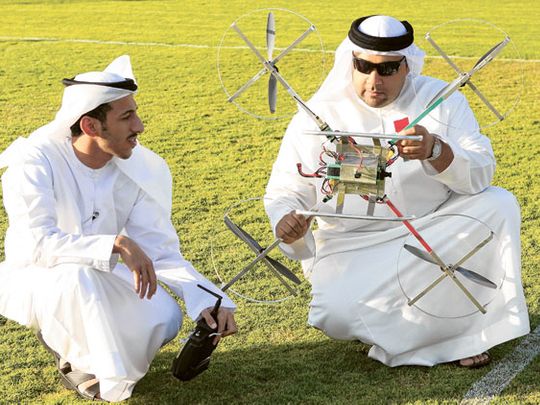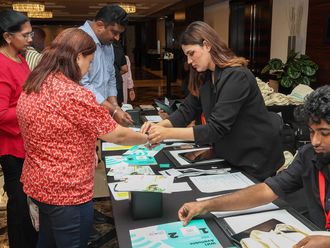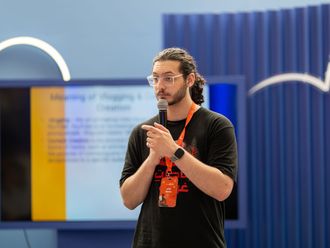
Khalil Al Beloushi, 37, is living proof that it is never too late to build a better future. Having dropped out of secondary school to take up government employment, the father of four recently made a decision to get an education — and get one he did.
Al Beloushi recently finished work on one of the country's first Emirati-made autonomous quadcopters. He built the unmanned aerial vehicle (UAV) as part of a mechatronics diploma project at Dubai Men's College (DMC) along with self-professed robotics fanatic, Mohammad Al Shamsi, 25. It took the pair nearly a year to independently research and subsequently build the UAV.
"Mohammad and I have always loved airplanes since we were children and have wanted to make something that could fly," said Al Beloushi. "We came up with the idea to build the UAV for our college project and build one of the first autonomous UAVs made in the UAE."
Generating knowledge
The quadcopter or quadrotor helicopter is a multicopter that is lifted and propelled by four rotors.
"This project is important because the quadcopter has many uses, for example, for security forces in surveillance or safety operations," said Dr Basim Al Lami from the mechatronics faculty at DMC.
"We know of some entities in the country that have bought expensive UAVs from abroad; but the one built here was made for a small fraction of the cost of an imported one."
He added although the quadcopter is in no way unique, the one built at DMC is important for the UAE for cost-cutting purposes.
"What I'm saying is this [quadcopter] was built for under Dh10,000 so we don't need a big company to make it," he said.
"What we do need is the knowledge, which is what these students have gained from their course and this project."
The UAV built by the DMC students weighs two kilograms and is made from light materials such as carbon fibre and titanium, most of which were bought from the local market. It can either be operated by a joystick or in autopilot mode and has a built-in wireless operated camera. Other features include a Global Positioning System (GPS) tracker, an altitude sensor and a magnetic sensor — used with the GPS in autopilot mode.
"The autonomous flight system uses a different programme switched on when the UAV reaches a certain altitude," said Al Beloushi. "According to the destination or coordinates we've put in the GPS system the UAV will fly itself to the location and fly itself back."
Currently powered by a lithium battery the quadcopter can fly for up to 15 minutes, reaching an altitude of 100 metres.
"This is one of the hardest robots I've built because all the ones I've done before have all been on the ground," said Al Shamsi. "Slight mistakes would make it crash, which meant we'd have to build it from scratch and order certain parts from abroad, that'd take up to two weeks to arrive."
The pair's diligence has taught them the fundamentals of carrying out applied research, which will no doubt be helpful to them. They are now focused on improving their autonomous UAV for commercialisation through Al Shamsi's online robotics business, RoboHiTec.
"I hope one day we can have our own manufacturing line in the UAE to build UAVs to sell internationally," said Al Beloushi. "UAVs made in the UAE."












